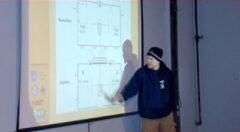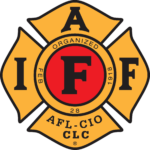
Advocacy Tools
Putting Data into Action: Presenting to Decision-Makers
Without question, these study findings will prove useful to affiliate leaders fighting potential layoffs, station closures or brownouts. They will also help support affiliate leaders requesting increased staffing. There is no one-size-fits-all approach to presenting these findings. Each presentation will vary based largely upon the audience and the time allowed for the presentation.
For the resources that you will need to effectively present to decision-makers, visit the “Resources” page of this toolkit, where you also can order a physical toolkit, including a DVD that can be distributed.
Residential Fireground Field Experiments
Below are several key points that will help presenters best convey these findings to decision makers.
Understand the Report
- The only way to effectively use these findings is to thoroughly read the report and understand the results.
- Decision makers often rely upon organizations like the International City/County Management Association (ICMA) and League of Cities for guidance. Presenters need to be able to speak fluently about the study, its findings, and their applicability to their community.
- This report adds to the wealth of knowledge already established by earlier studies. Where there are different findings, particularly with findings presented by external consultants, remind decision makers that methodologies, as well as goals and intents, may differ among reports.
Be Mindful of the Study’s Limitations
The study investigators identified nine limitations. This study cannot account for every variable that may arise. For example:
- The applicability of the conclusions from this report to commercial structure fires, high-rise fires, outside fires, terrorism/natural disaster response, HAZMAT or other technical responses has not been assessed and should not be extrapolated from this report.
- The effects of deploying either more or fewer apparatus to the scene was not evaluated.
- Although the weather conditions for the experiments were moderate to cold, frozen equipment such as hydrants and pumps was not factored. Also, the effect of very hot weather conditions on firefighter performance was not measured.
The Report is Based on Science, NOT Opinion
- The results are not an exaggeration created to lobby for increased fire fighter staffing – they are based on science. Underscore the realism of the experiment by emphasizing that the layout of the burn room could be representative of a room in anyone’s home.
- Reinforce the potential risks by referring to recent news stories about a fire in your area. The purpose of gaining attention with a news story is not necessarily to evoke an emotional response or to sensationalize the findings of this report. News stories are useful to provide realistic accounts of actual response times and their outcomes to compare against the more conservative study findings.
Education is Key
- Decision makers will need a high-level description of fire suppression operations to contextualize these findings. Be prepared to articulate how the job gets done.
- Walk decision-makers through the critical elements of fire suppression – particularly those tasks which are impacted by crew size. Highlight tasks that can happen simultaneously and those that must occur sequentially.
Tailor the Presentation to Your Audience
Be realistic – recognize that staffing decisions and deployment configurations must be established by considering a number of variables including population density, the distribution of structures, age and type of construction, the size of the fire station’s first-due coverage area, and the resources available to that jurisdiction.
Customize How You Use the Data
How you use the results will depend upon your audience and your current deployment configuration:
- Audience – you may be addressing decision-makers who have no fire service background. For this audience you will need to be able to speak about the study and its findings at a lay-person level. Speak in terms of Effective Firefighting Force (EFF) instead of crew size to more accurately describe how many people responsed to a scene.
- Time – you may have only 10 to 20 minutes to address elected officials at a municipal meeting. Be prepared to provide the main points in a brief presentation.
- Deployment configuration – a company that currently utilizes a two-person crew cannot realistically appeal for increasing staffing to five-person crews. Decide what is realistic for your community and use the results to support your position.
- Be prepared to answer decision makers’ questions about the report’s applicability to different scenarios, e.g. one engine and one truck staffed with 4 personnel vs. the 2-person crew scenarios used in this project (three engines and one truck each staffed with 2 personnel). Both scenarios provide for an EFF of eight fire fighters. Would the experiments’ findings still apply to the first scenario?
Talking Points
- The intent of the study is to determine how well fire service decision-makers match resources to risks and the most important factors that will help make better decisions about these matches in the future.
- We now have quantitative data to support the position that fire fighter deployment configurations that attack fires earlier in the fire development process present lower risk to occupants, property and fire fighters.
- The longer the duration of the fire development process without intervention, the greater the increase in risk for occupants and responding fire fighters. Therefore, when considering layoffs, station closures or brownouts it is imperative to remember that time is critical for getting first responders to the scene.
- Remember the goal: To reduce occupant injury and death, loss of property, and fire fighter injury and death by making better decisions about resource deployment in a risk-filled environment.






